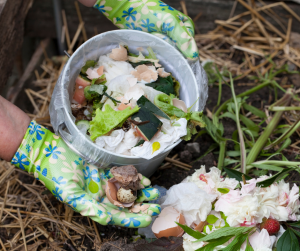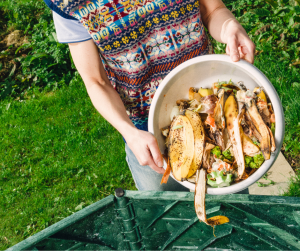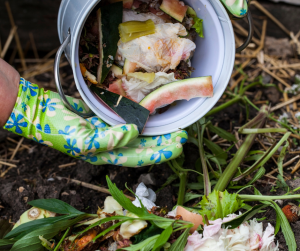Guide to Bokashi Composting

L.J.
Environmental Advocate
Bokashi Composting: A Smarter Way to Handle Kitchen Waste
Bokashi composting is a low-odor, indoor-friendly method that ferments all kinds of kitchen waste — even meat and dairy. It’s quick, compact, and perfect for homes without outdoor space. In this guide, we’ll show you how it works, what you’ll need, and how to turn food scraps into garden gold.
Affiliate Disclosure: This guide contains affiliate links to products I’ve researched and trust. If you choose to buy through these links, I may earn a small commission — at no extra cost to you. It helps support this site and keeps the compost flowing
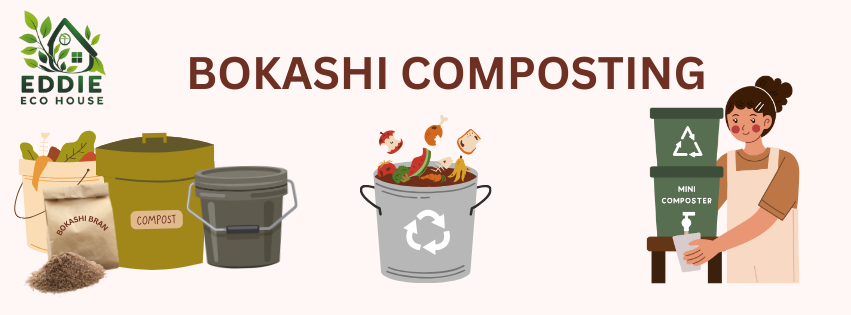
Contents
What Bokashi Composting is
The word Bokashi is Japanese and translates to “fermented organic matter.” Unlike traditional composting, which relies on aerobic decomposition, Bokashi uses anaerobic fermentation to break down food waste—meaning it happens without oxygen, inside a sealed container.
At the heart of the process is Bokashi bran—typically wheat or rice bran inoculated with Effective Microorganisms (EM). When layered with food scraps in an airtight bin, this mix pickles the waste rather than decomposing it. The result is a pre-compost that looks fermented and slightly sour, not rotted.
You’ll know it’s working by the sweet-and-sour, pickle-like aroma—a sign that the microbes are doing their job. If the smell turns rotten or putrid, something’s gone off track.
Aerobic & Anaerobic (Composting)
Aerobic: A process that requires oxygen.
In composting, aerobic microbes break down organic matter quickly, producing heat, carbon dioxide, and earthy-smelling compost.
Anaerobic: A process that occurs without oxygen.
In composting, anaerobic microbes ferment organic waste, producing acids and gases.
What can I add to my Bokashi Composter?
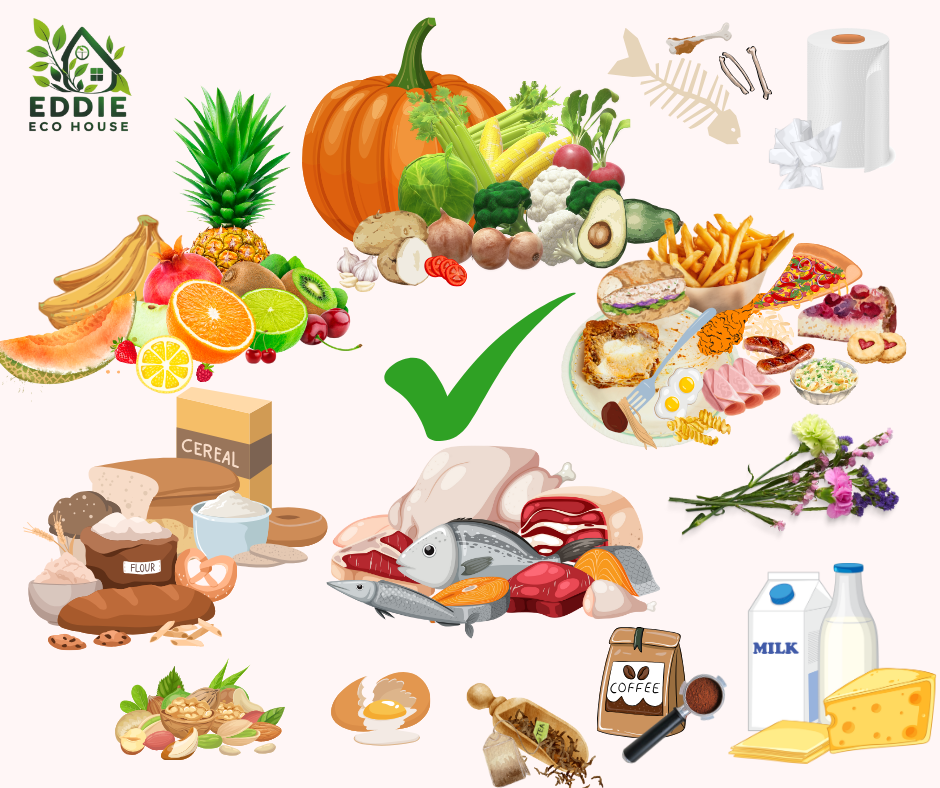
What to add:
Food scraps & Leftovers:
- Fruit & Veg
- Dairy products.
- Baked goods.
- Meat, fish & bones.
- Prepared foods.
- Other organic materials such as spent cut flowers, coffee grounds & tea bags. If you wish to add teabags, you should let these dry out before you add them.
Avoid adding:
- Liquids, oils and grease.
- Pet waste.
- Tobacco Ash.
- Non-organic materials.
Benefits of Bokashi
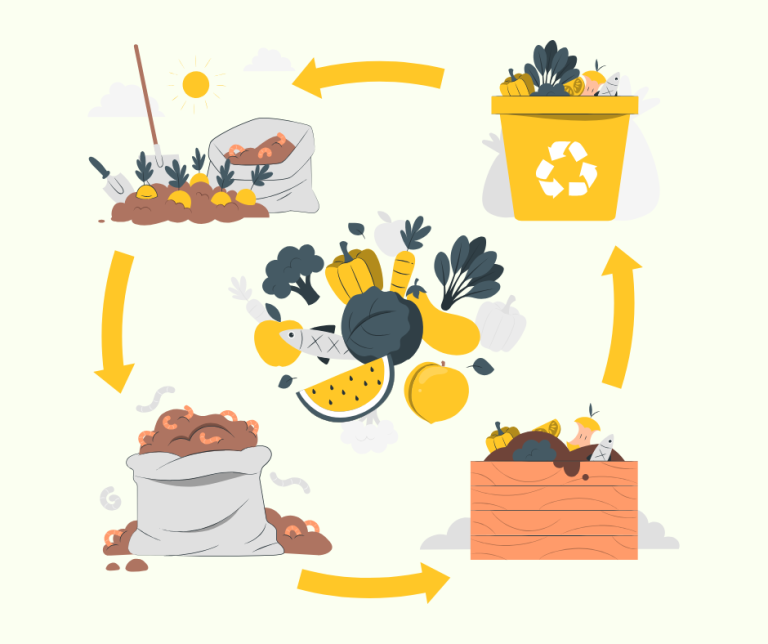
- Reduce food waste
The Bokashi process lets you compost food waste that can’t be composted within your traditional composter, like meat, dairy and cooked foods. You can add any organic material to your Bokashi bin, although avoid adding liquid, oil, and grease, as they can disrupt fermentation,
- Rapid results
Fermentation, and finishing the pre-compost, each only take a few weeks. Finished compost can be used within 4-8 weeks.
- Nutrient-Rich
Pre-compost can be used to enrich soil or composting mix – improving microbial life, nutrient content and boosting plant growth.
- Contained odours
Odours are contained within the sealed airtight containers.
- Minimal space:
Bokashi composters usually have a capacity of 15-20 L. This takes up minimal space, although you need at least two: one for filling, and one for fermenting.
Bokashi Composting Kits
What you need:
Two buckets/containers – Bokashi composters will have a tap to drain off the excess liquid and a lid that seals air-tight.
Bokashi bran – this is usually wheat or rice bran which has been inoculated with effective microbes.
Instruction guide.
Inner drain tray
Tamper tool/trowel to compress waste – although a potato masher works well.
Scoop for bran and tea.
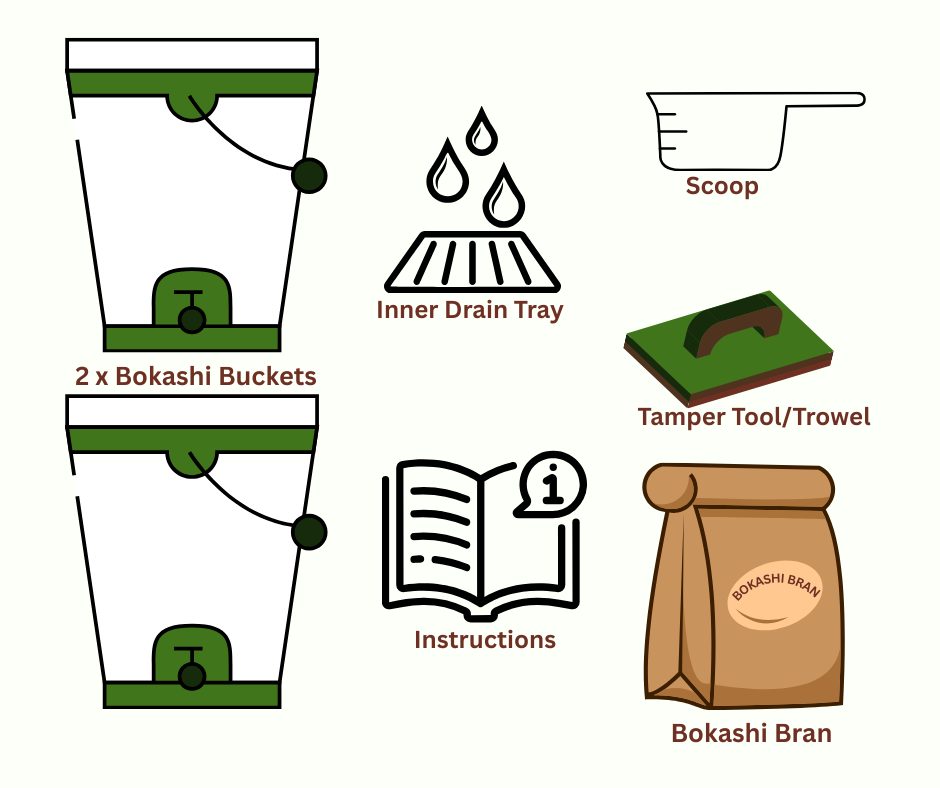
Bokashi Setup Costs
Buying a Starter kit:
Most Bokashi starter kits will cost between £40-£120 depending on the size and brand. Some are sold individually and others as twin kits.
We have Blackwall Twin Pack Bokashi Bin – this comes with 1kg of bran, perfect for starting off.
Planning to keep your Bokashi composter on display? Some designs are more stylish than others.
Tight budget, but you’d prefer to buy a kit? Try Wiggly Wigglers Budget Kit- this uses buckets without taps by adding cardboard to soak up the liquid.
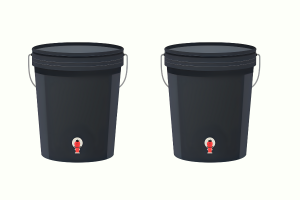
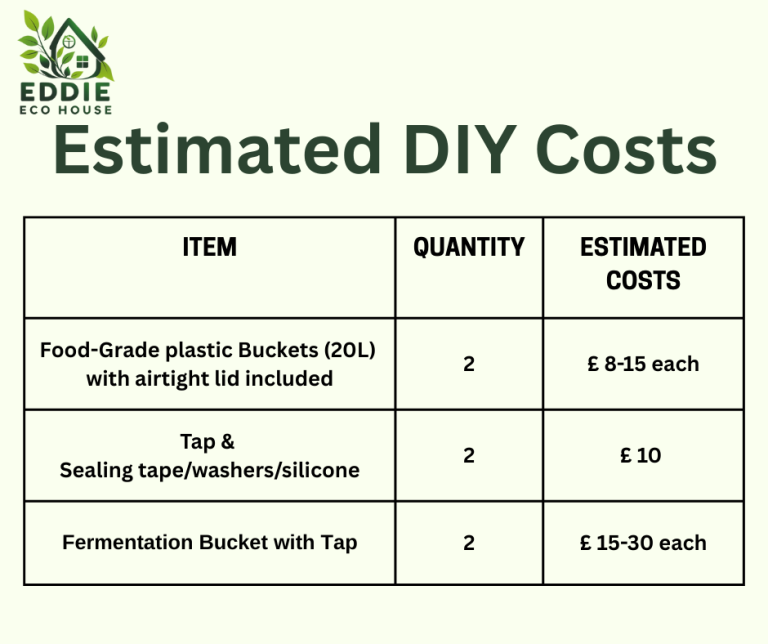
DIY approach:
You could make your own system using airtight buckets and buying bran separately. This may be a more affordable option – A DIY set up is estimated to cost between £25 – £60, depending on the method you choose and where you source the required materials.
There are two methods that can be used to create your compost system – Tap & Bucket, or Double-Bucket.
Money Saving Tip:
Best Places to Ask for Used Food-Grade Buckets
DIY Approach - Tap & Bucket
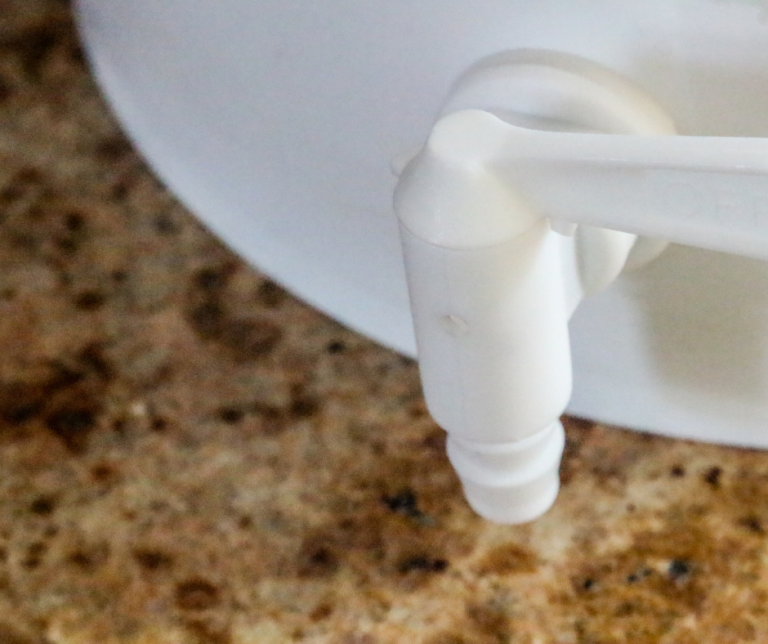
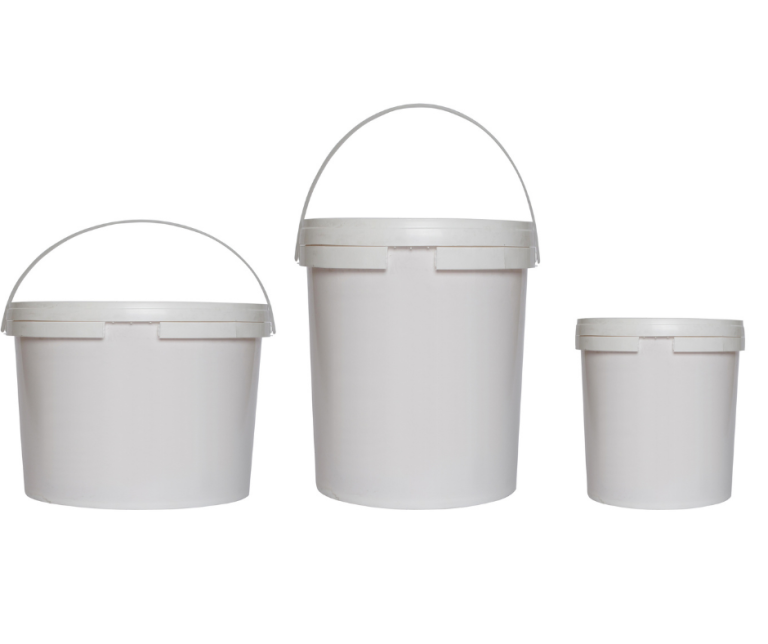
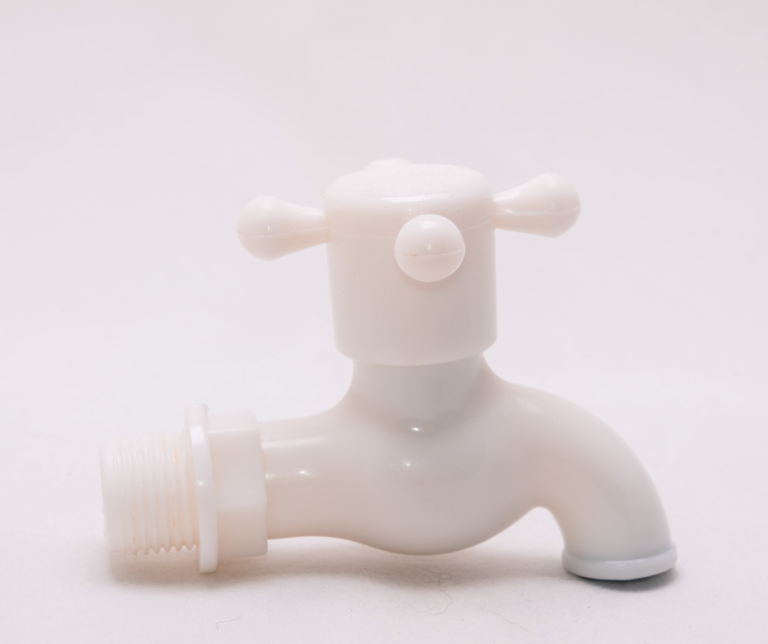
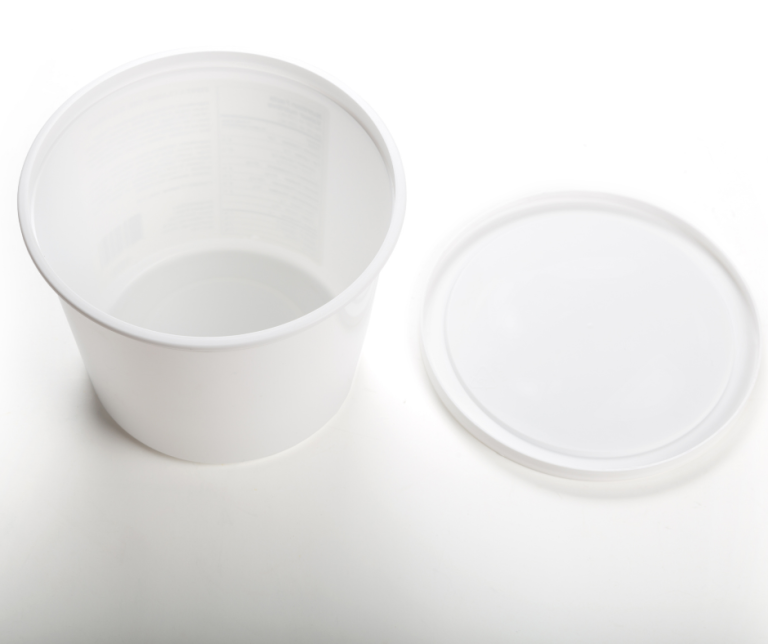
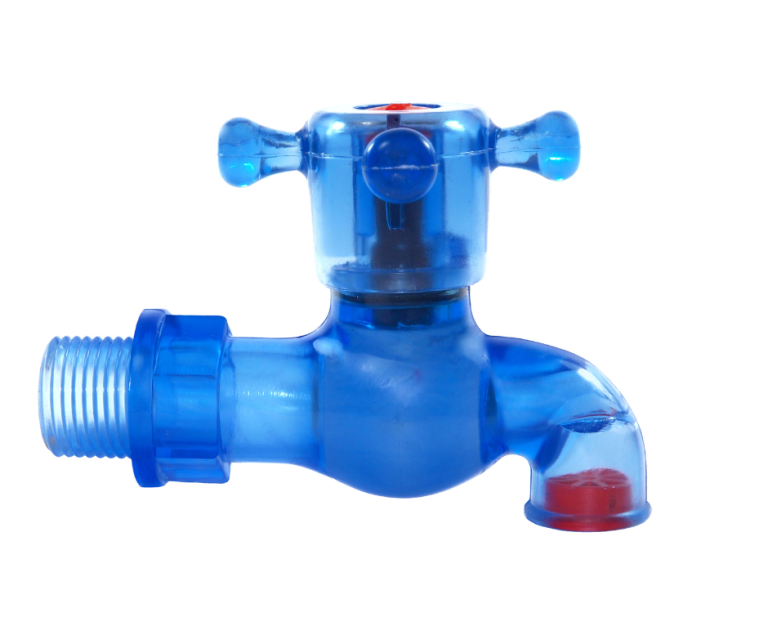
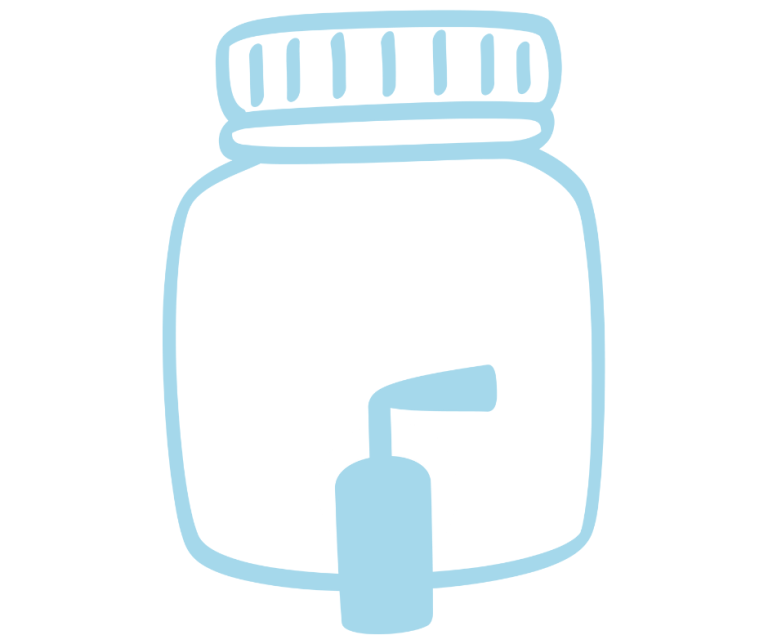
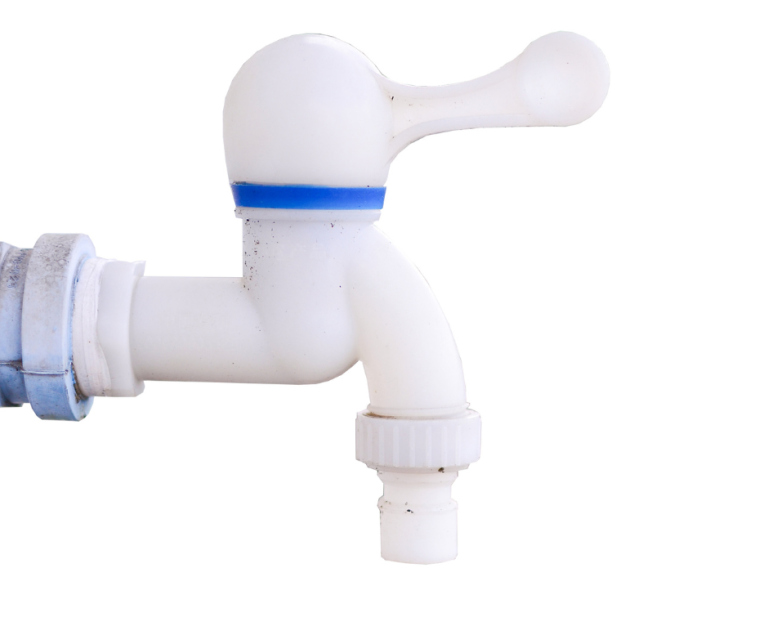
Tap & Bucket –
Bucket: Choose a 20-litre food-grade plastic bucket with an airtight lid.
Ready-made option: A fermentation bucket with a tap makes an excellent off-the-shelf Bokashi composter.
DIY option: Use a sturdy airtight bucket and fit your own tap near the base. Brewing or water dispenser taps work well and are easy to find online.
Seal: Ensure the tap is tightly fitted to prevent leaks or air getting in. Use rubber washers or food-safe silicone for a snug seal.
Drainage plate: (Optional, but very useful) Add a perforated tray or mesh above the tap to stop food waste from blocking it.
Lid: An airtight seal is essential — the Bokashi process won’t work without oxygen-limited (anaerobic) conditions
DIY Approach - Double-Bucket
Double-bucket method –
This setup uses two buckets per composter (so ideally 4 buckets in total if you want a pair).
Inner bucket: Drill drainage holes in the base to let liquid escape.
Outer bucket: Use a sturdy, airtight bucket to catch the liquid.
Spacer: Place a block or spacer in the outer bucket so the inner bucket sits slightly raised, preventing food waste from sitting in liquid.
Assembly: The inner bucket nests inside the outer one, allowing liquid to drain down.
Emptying: Simply lift out the inner bucket and pour the liquid from the outer bucket.
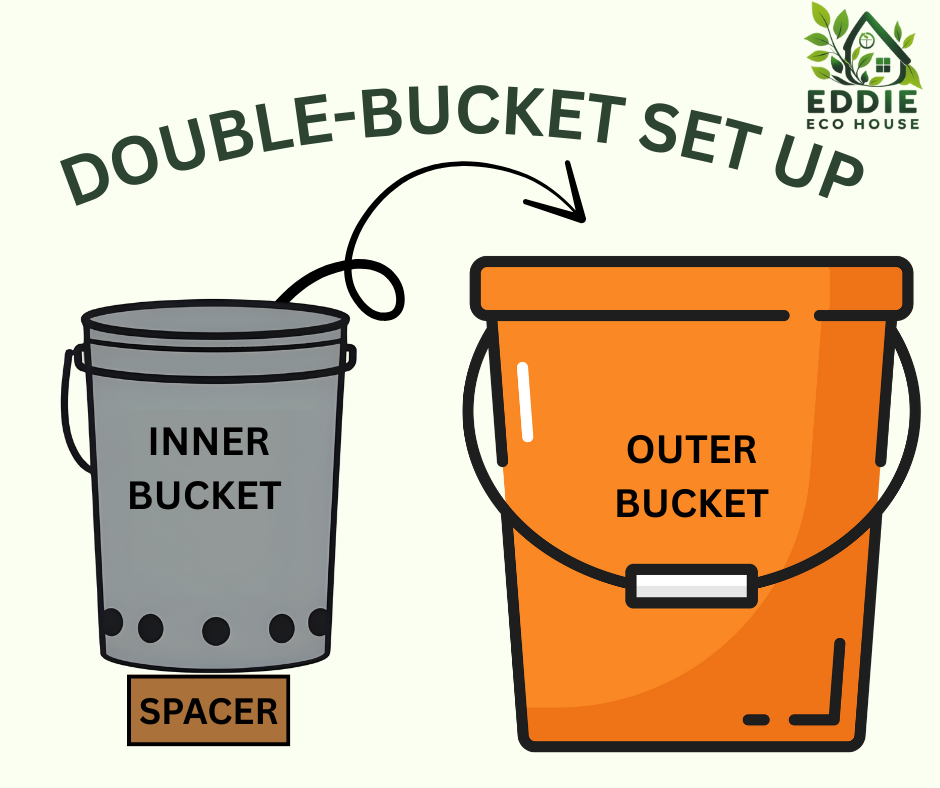
Bokashi Bran
Once your Bokashi system is set up, the only ongoing cost is Bokashi bran.
This microbial inoculant is essential for fermentation and should be added with each layer of food waste.
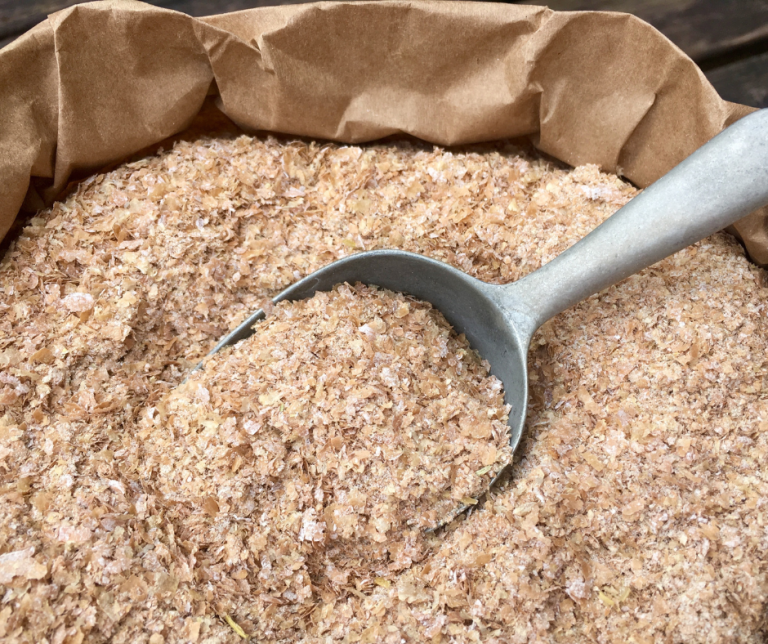
What is Bokashi Bran?
Bokashi bran is a dry mix of wheat or rice bran and molasses, inoculated with Effective Microorganisms (EM). It is the key ingredient for Bokashi composting, as it kickstarts fermentation, suppresses odours, and produces a liquid by-product known as Bokashi tea.
- Wheat/Rice Bran acts as the carrier for microbes.
- Molasses is a simple carbohydrate that feeds the microbes throughout fermentation.
- Effective Microbes (EM): A mix of beneficial microbes—including lactic acid bacteria, photosynthetic bacteria, and yeasts (a type of fungus)—that support anaerobic fermentation.
How to Use Bokashi Bran:
- Start with a clean Bokashi bin and sprinkle a small scoop of bran across the bottom.
- A handful of bran is needed for every 3-4 cm layer of food waste.
- How much is a “handful” of Bokashi bran? This typically means about 1-2 tablespoons, or around 10-15 g.
- Sprinkle the bran evenly across the surface of the food waste, ensuring it touches as much of the material as possible. This promotes thorough microbial contact and supports efficient fermentation.
- You can’t overdo it—if you’re unsure, it’s always better to add a little extra Bokashi bran.
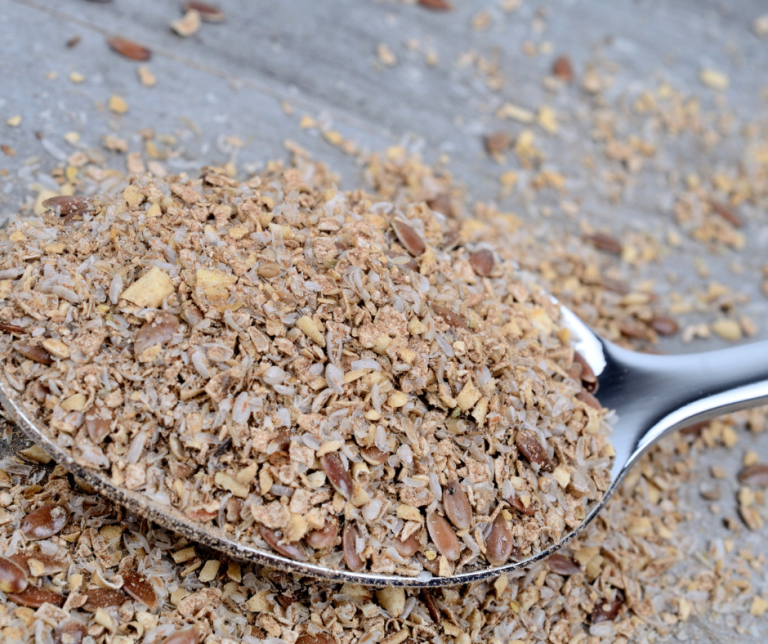
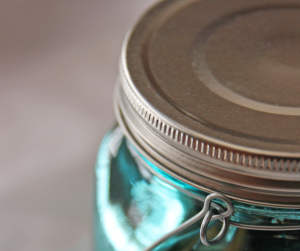
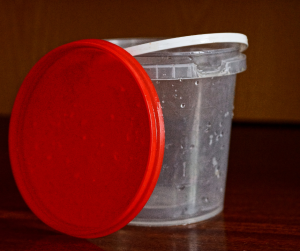
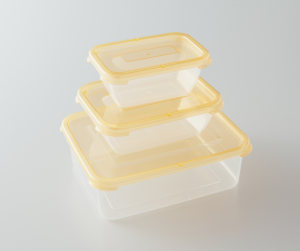
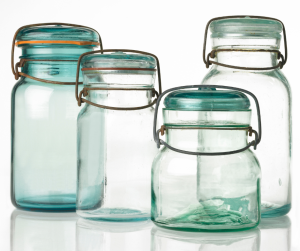
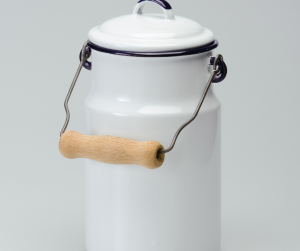
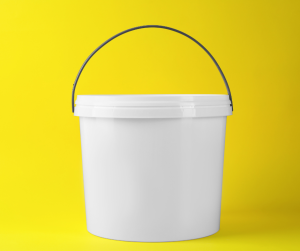
Bokashi Bran Storage Tips:
- Keep Bokashi bran dry and airtight – moisture can spoil the microbial balance.
- Store in a cool, dark place – like a cupboard or shed.
- Use containers with secure lids or resealable bags.
Cost of Bokashi bran:
The amount of Bokashi bran required is dependent on how much food waste you add. See our table below to estimate your requirement.
Bran is typically sold in 1 kg to 15 kg bags, and the cost varies by size—larger bags offer better value per kilo.
Bulk Buying = Better Value
Buying in bulk is the most cost-effective option, especially if you’re composting regularly or managing multiple bins.
Benefits of bulk-buying:
- Lower cost per kilogram.
- Fewer reorders & deliveries.
- Ideal for:
- Community composting projects
- Sharing with friends or neighbours
- Households with space to store larger quantities
Limited on Space?
If space is tight, consider ordering smaller bags more frequently. You’ll still benefit from fresh, active bran and avoid spoilage from improper storage.
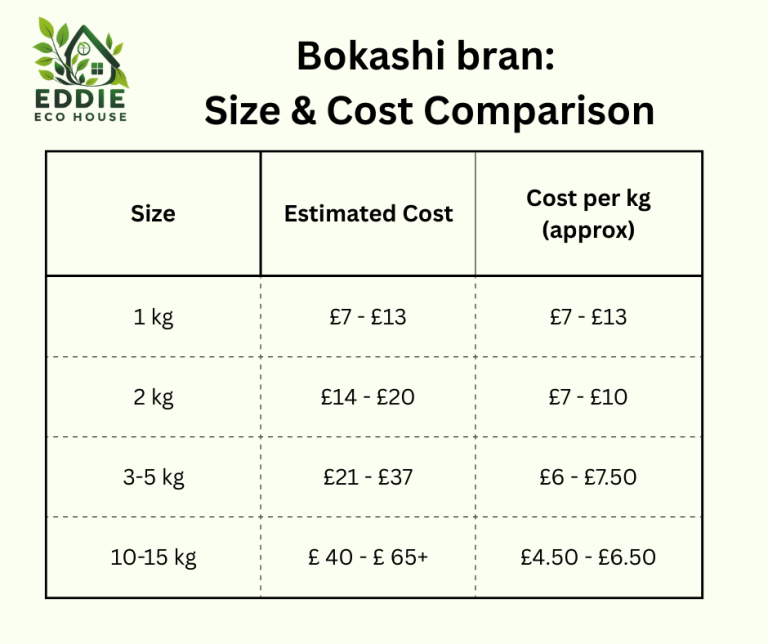
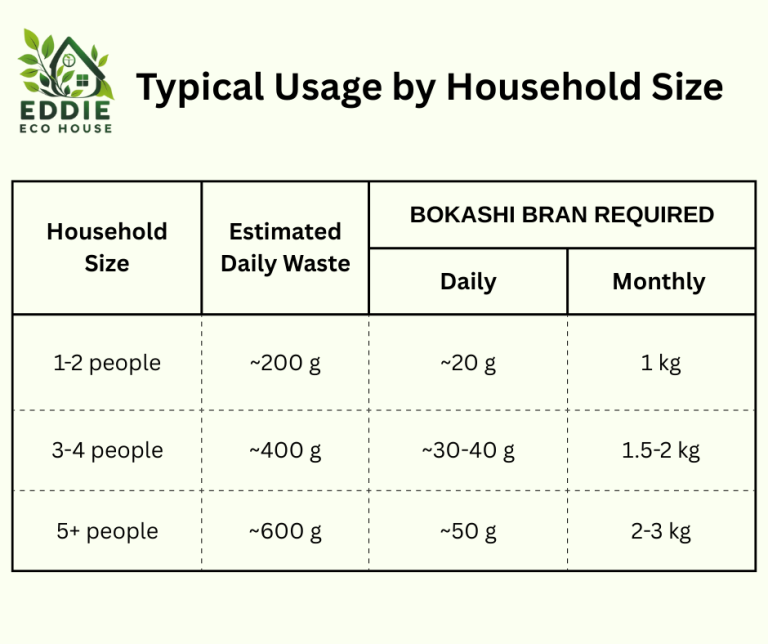
Wondering where to buy your Bokashi Bran:
- You can buy 1 kg, 2 kg, 3 kg, 5 kg, 10 kg, and 15 kg bags on Amazon.
- Agriton Group sells 1kg, 2kg & 15 kg bags.
- EvenGreener offer 1 kg & 3 kg refill bags.
Want to Try the DIY Approach for Bokashi Bran?
Making your own Bokashi bran is a budget-friendly, satisfying way to take control of your composting process. It’s surprisingly simple, requires only a few ingredients, and lets you customise the mix to suit your needs.
The Bokashi Method
The Bokashi process is relatively simple and surprisingly flexible. You can compost almost any food scraps—including bread, dairy, and meat. Bokashi bran introduces friendly microbes that ferment the waste, turning it into nutrient-rich pre-compost.
This section walks you through the step-by-step method: how to layer food waste and bran, drain off Bokashi tea, and bury the fermented mix to complete the process. Simple actions, big impact.
Adding to your Bokashi composter
- Food scraps are added to the Bokashi container.
- The food should be compressed using either the tapping trowel or a potato masher. This removes any air pockets from around the food pieces.
- Sprinkle a handful of Bokashi bran on top of each 1 inch layer of food waste.
- Keep the lid sealed.
- Once full, the bin should be kept sealed for 2-4 weeks as the waste ferments.
- After this time, the waste, known as Pre-Compost, should be added to a traditional composter or buried in soil to finish decomposition.
- The process produces liquid, known as Bokashi tea, that needs to be drained regularly.
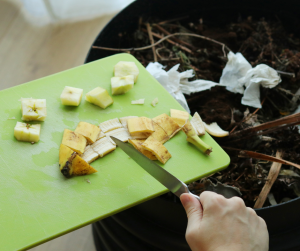
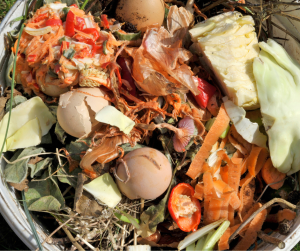
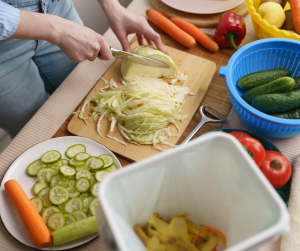
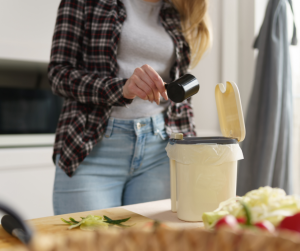
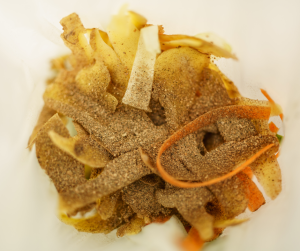
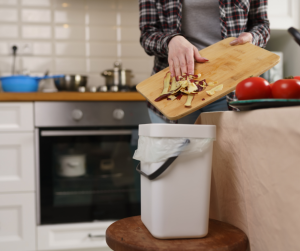
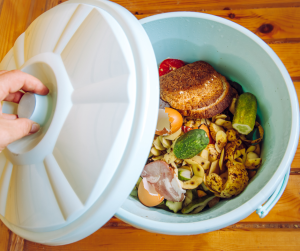
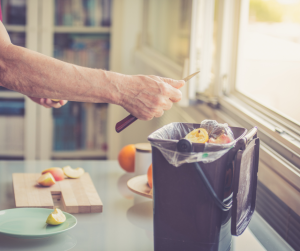
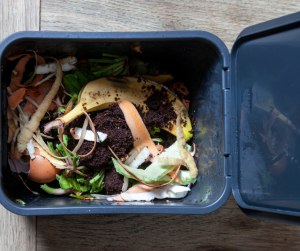
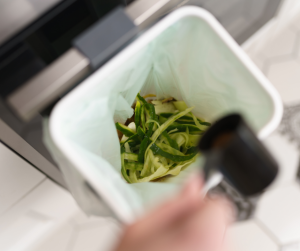
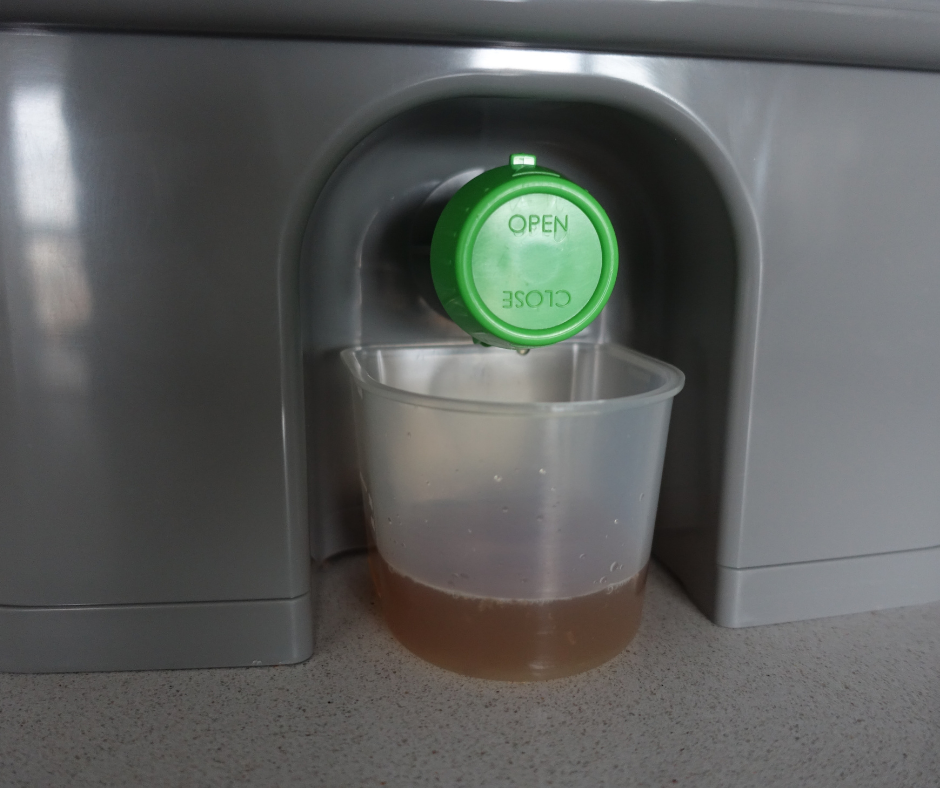
Draining Frequency
The amount of liquid (Bokashi tea) produced depends on the type and quantity of waste you add.
Once a week (minimum): Drain at least this often, even if little liquid is present.
Every 2–3 days (better): Helps prevent liquid build-up and keeps the bin balanced.
Every 1–2 days (best): Ideal, especially if adding high-moisture foods (like fruit, veg, or cooked leftovers).
Using the Bokashi Tea?
Bokashi tea can be diluted to use as a natural plant food.
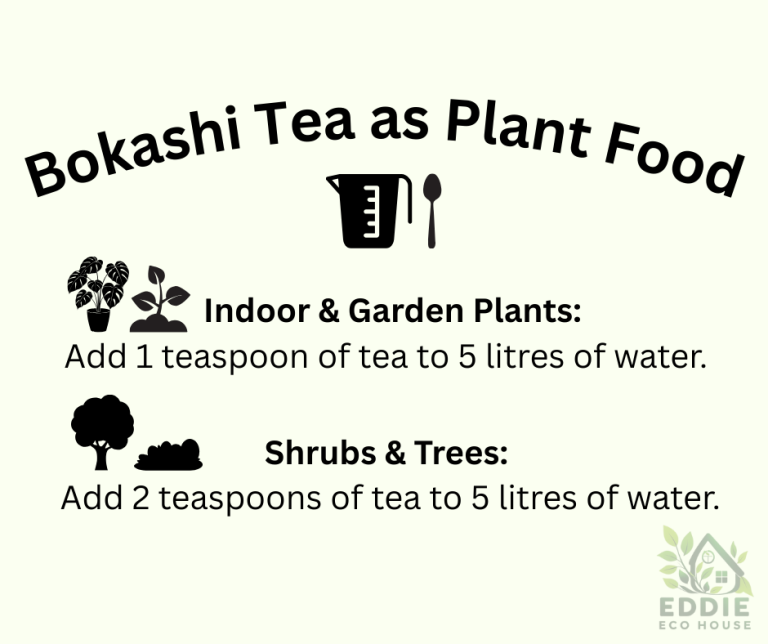
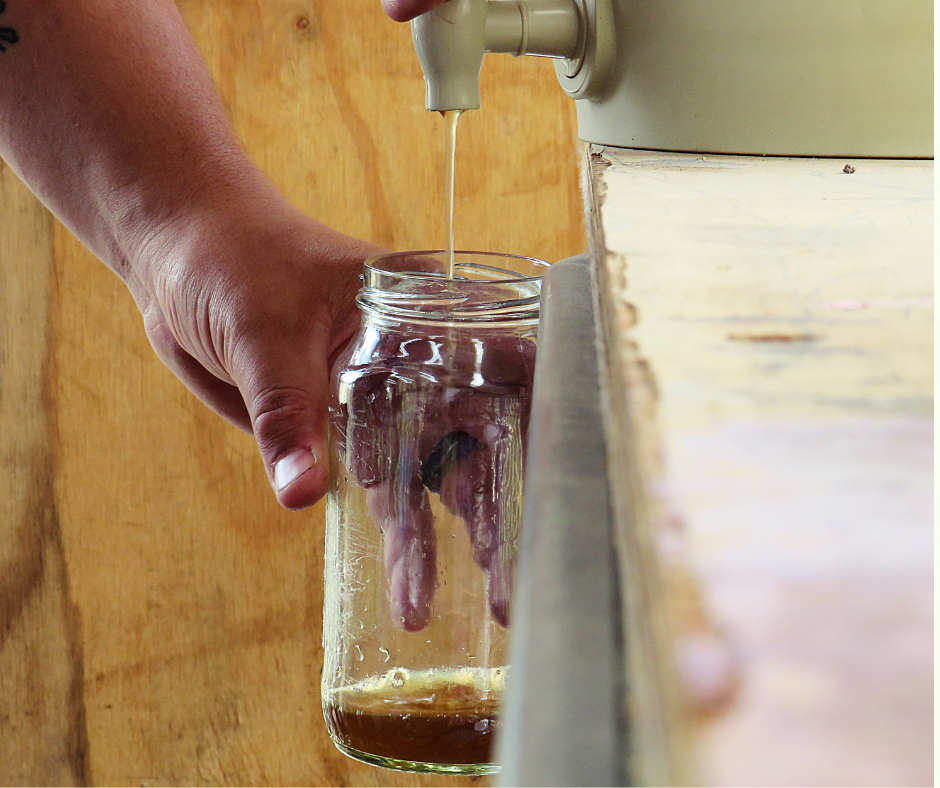
Alternatively, you can pour it directly into kitchen and bathroom sinks, toilets or septic systems. The undiluted liquid will help to prevent algae build-up and control odours.
How To Use Pre-Compost in your Garden
After 2-4 weeks of fermentation, the food waste is partially broken down.
At this point, the waste is known as pre-compost. Pre-compost is not ready to use directly on plants yet as it is not fully decomposed and is very acidic.
How to finish your pre-compost?
Pre-compost needs to finish the decomposition process. This can be finished in soil or in a compost bin.
In Soil
Option 1: Trench Method
Option 1: Trench Method
- Dig a trench of hole: About 6-12 inches deep works well.
- Add the pre-compost: Spread it evenly within the trench or hole.
- Cover with soil: This prevents odours, keeps pests away, and encourages aerobic decomposition to take over once in contact with soil biota (all organisms living within the soil).
- Allow some time for compost to finish: Usually 2-6 weeks is enough time for the material to become finished compost.
- Planting: After decomposition, you can plant directly above the enriched soil.
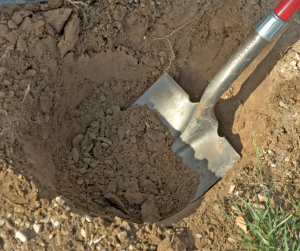
Option 2: Multiple Holes
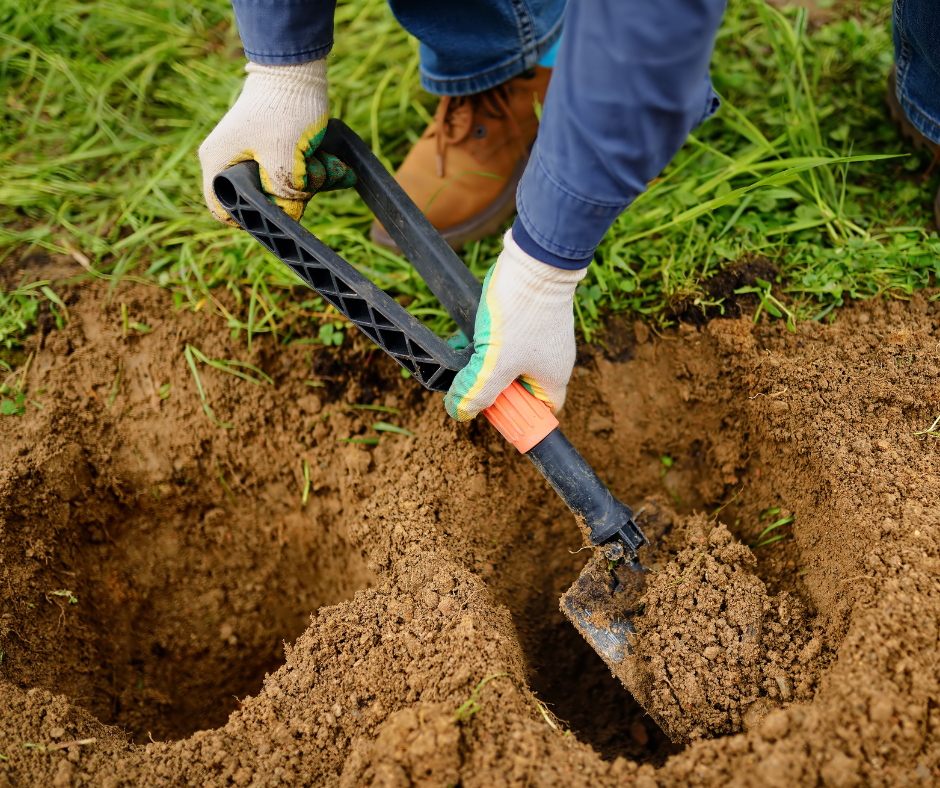
Option 2: Trench Method: Multiple holes .
Rather than digging a single large trench or hole, you can dig multiple smaller holes and bury it the same as Option 1.
You can dig shallower holes, so long as you add less pre-compost and cover it well to avoid odours and pests.
Ideal if:
- you have a lot of pre-compost (waste)
- you have limited space
- you want to enrich soil in multiple places
- you garden in containers and pots
Option 3: Container Soil Enrichment
Option 3: Container Soil Enrichment
Mixing in your pre-compost:
- Container: You will need a large container with a lid. This should be at least three times the capacity of your Bokashi container.
- Drainage holes? Drill a few holes in the bottom to let liquid drain. Skip this step if it is not suitable for where you intend to keep it – like a garage, shed or on patio slabs.
- Fill 1/3 with Garden Soil: Add regular healthy soil from your garden to the container. Aim to fill approximately a third of the container.
- Add pre-compost: Empty your pre-compost from your Bokashi composter into the container.
- Add a Soil Layer & Mix: Add a 1-2 inches layer of garden soil. Use a shovel to break up any pre-compost clumps and mix with the garden soil.
- Add More Soil: Cover the pre-compost-soil mix with more garden soil (at least 2-3 inches).
- Secure and wait: Make sure the lid is on and secure.
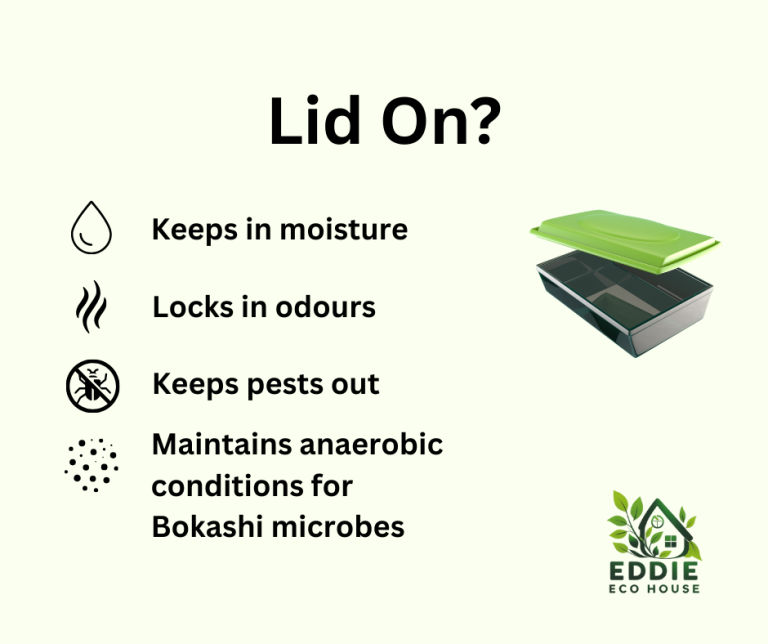

Finished Compost:
Tip: Mix weekly to speed things up.
- Wait: Give it 2-4 weeks, then check the mix.
If it’s still not fully composted, try turning it over and leave it another week. - Trust the process: Even if it takes a bit longer, it will result in nutrient-rich compost. Cooler temperatures may slow decomposition, which is perfectly normal.
- Use Compost: finished compost can be used in your garden.
- Top it up again: As you remove finished compost, you will make room for the next load of pre-compost and can follow the process again.
- Remember: once pre-compost is added to the bin again, you will need to wait to remove any more compost.
Double Up Your Bokashi – Use two containers for soil enrichment, just like two compost bins. Perfect if your indoor bins fill fast.
In a Compost Bin
If you have space to add or already have a traditional compost bin, this is a popular way to finish the pre-compost off. You will need to have composting materials in the bin already for this method.
- Dig a hole: Aim for 8-12 inch deep within the compost bin.
- Add pre-compost: Empty your Bokashi composter into this hole.
- Break it up: You should always break the pre-compost up using a garden fork or shovel.
- Cover & Turn: Cover the pre-compost with some existing composting materials, then turn it well to mix the pre-compost in the existing waste.
- Fully Covered: Aim to cover it with 6-12 inches of existing composting materials. Essential to prevents odours and pests, plus speeds up decomposition.
If you don’t have enough waste to cover the pre-compost, add some garden soil – enough to cover it fully. - Turn it: Turn your compost bin weekly. Regular turning speeds up decomposition of both the pre-compost and the existing compost mix.
- Wait: The pre-compost will break down fully within a couple of weeks.
- Finished compost: use when- and wherever needed.
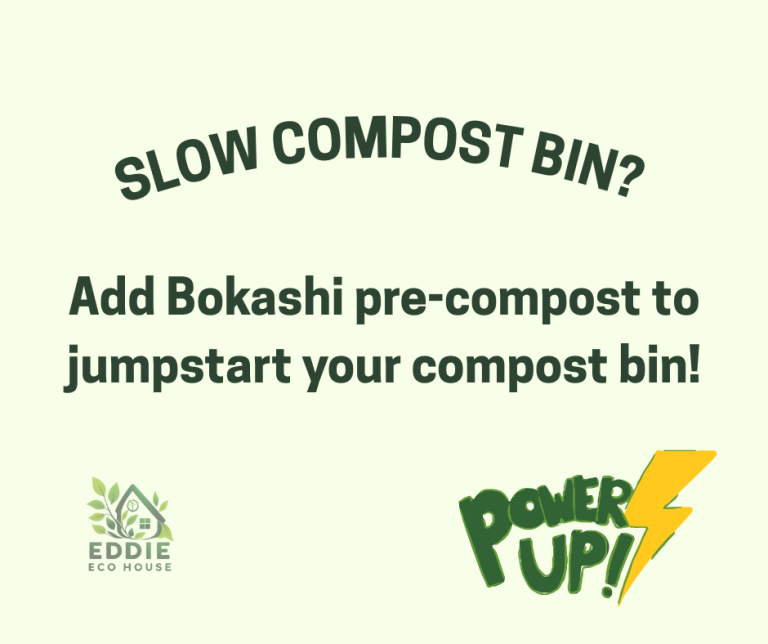
Is Your Compost Ready? Here’s What to Look For
Perfect finished compost – often called black gold – is the end result of the full composting process. The organic matter will have broken down into a rich, earthy material that your plants will thank you for.
Here’s what it should look, feel and smell like when it is ready to use:
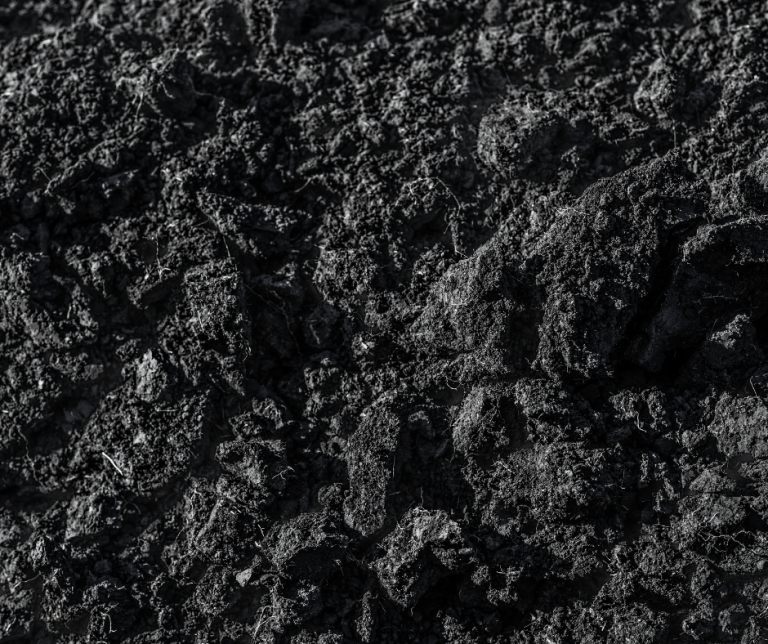
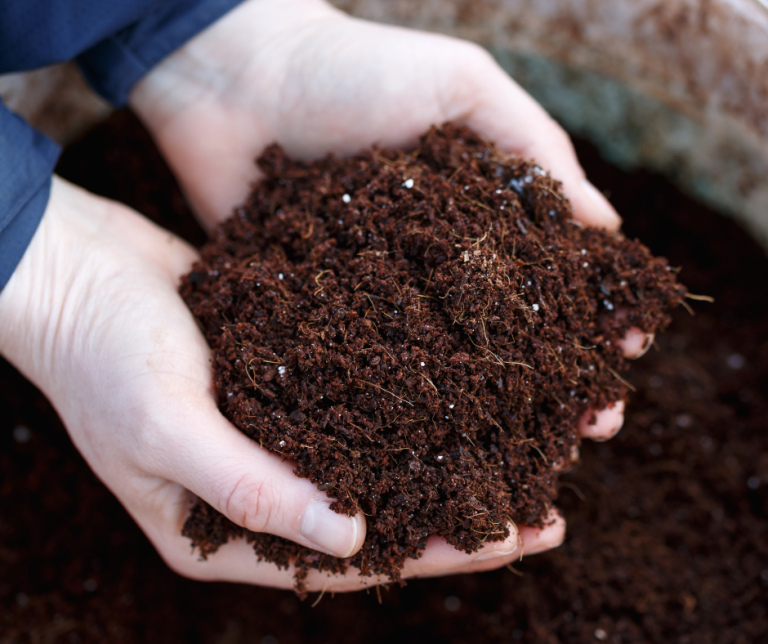
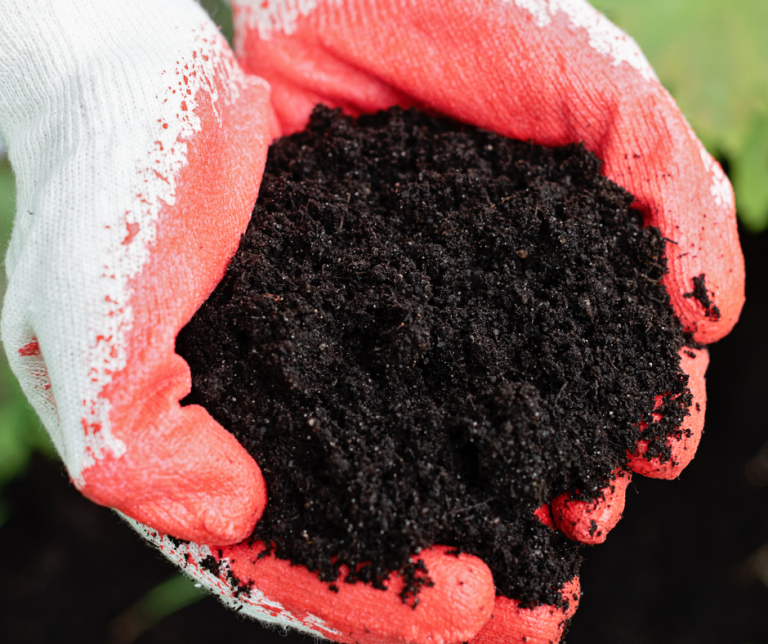
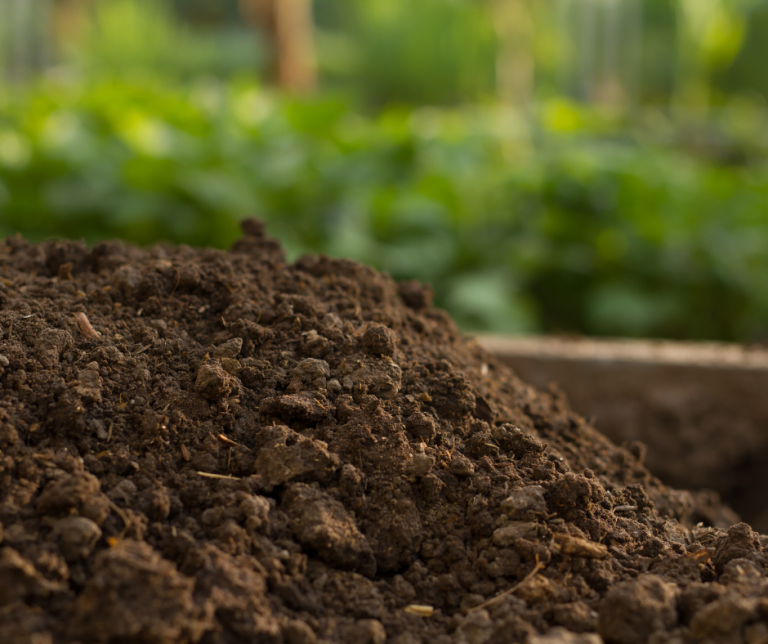
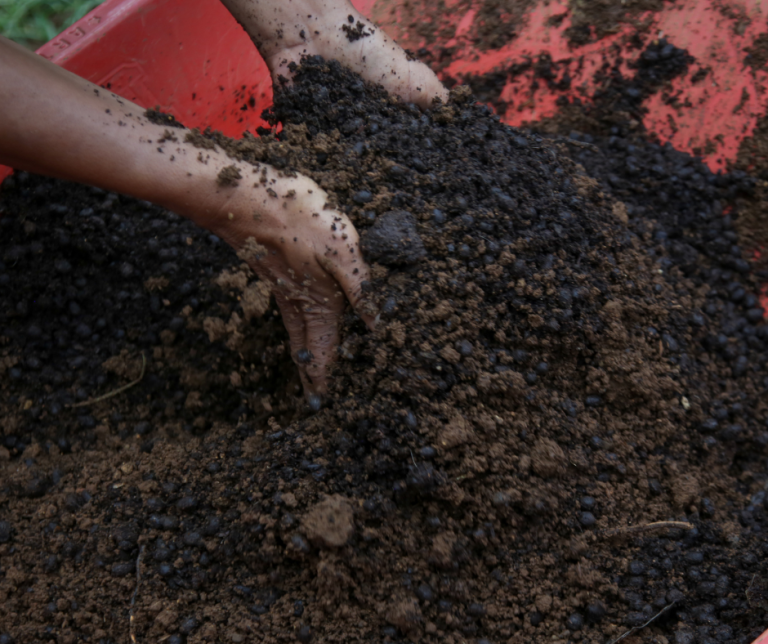
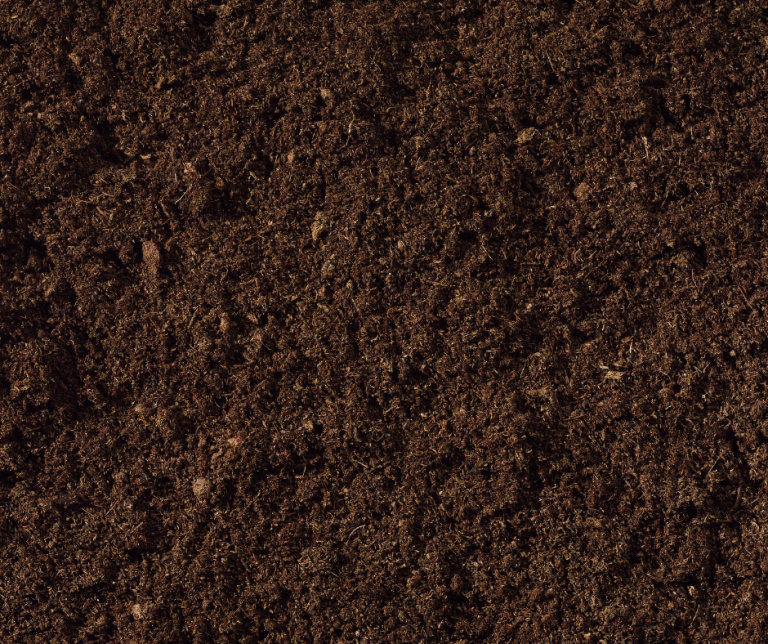
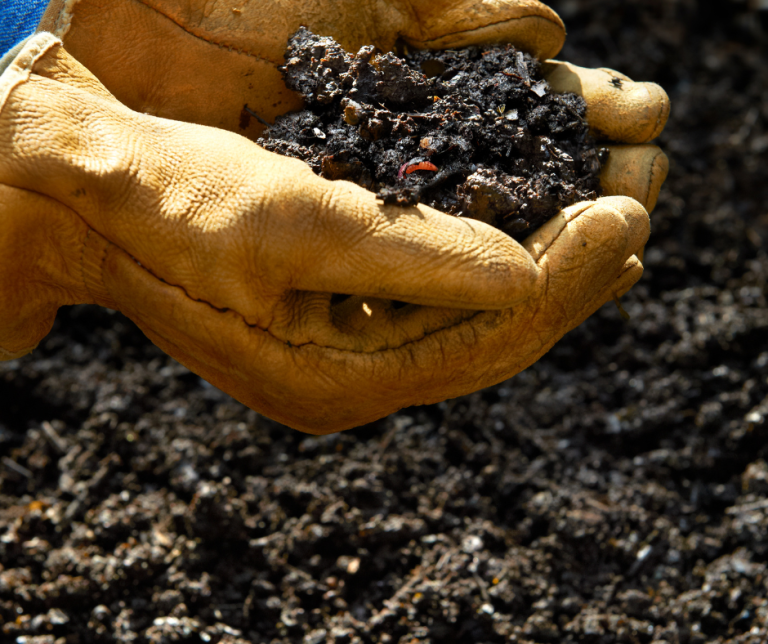
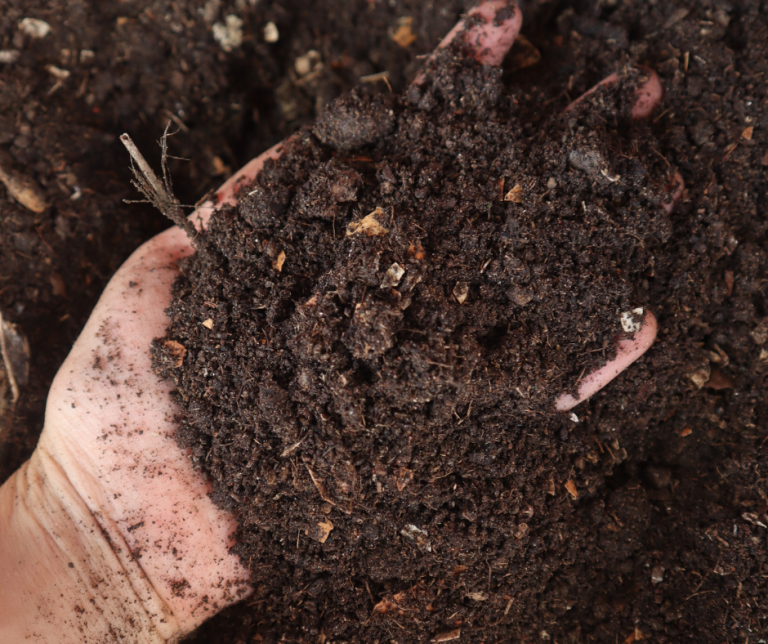
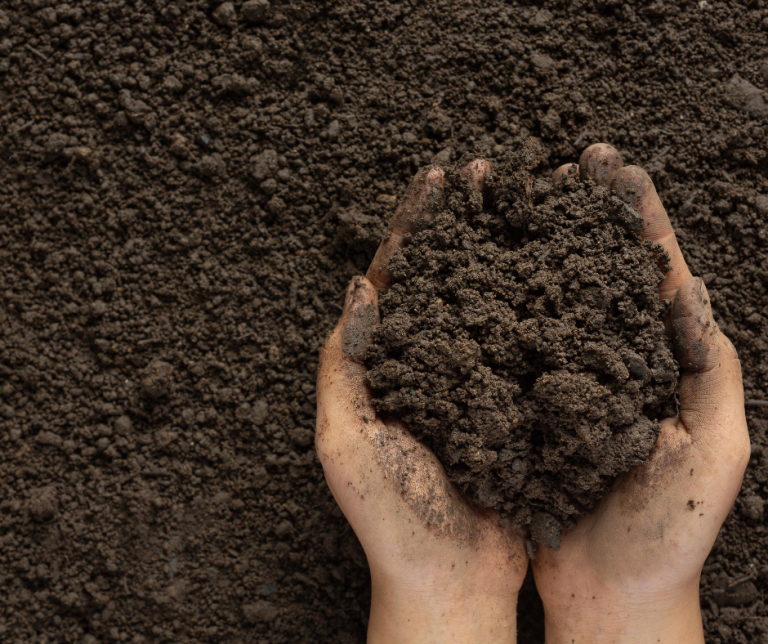
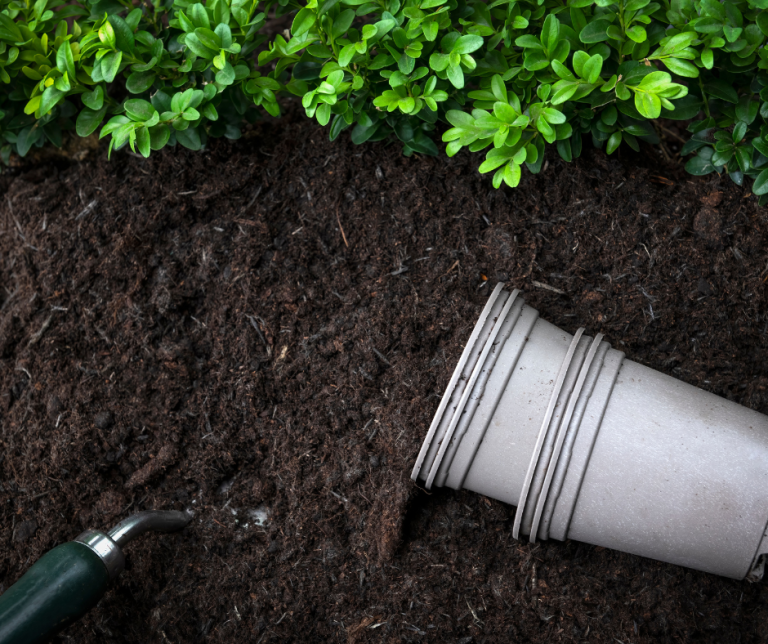
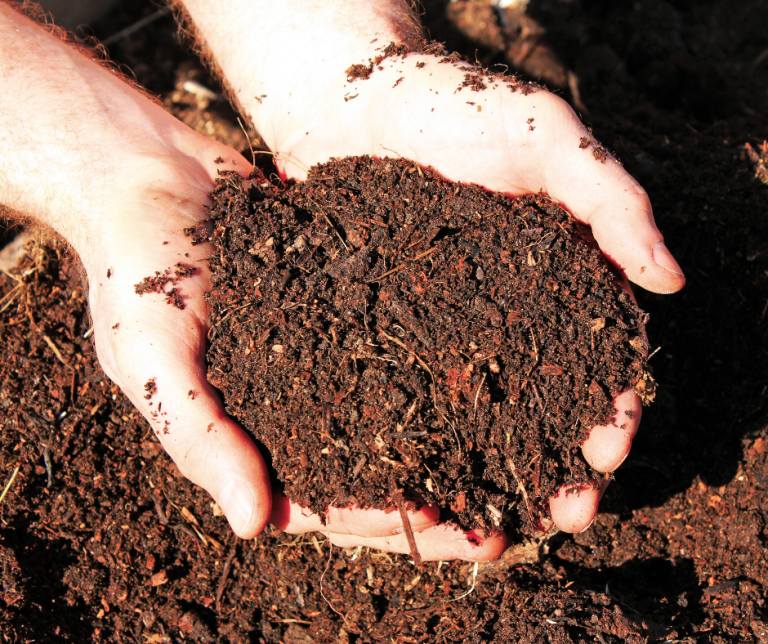
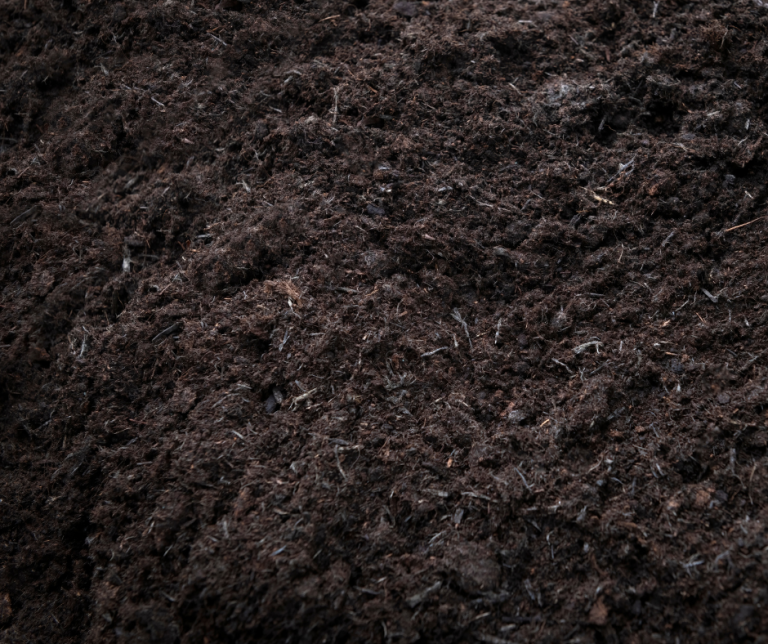
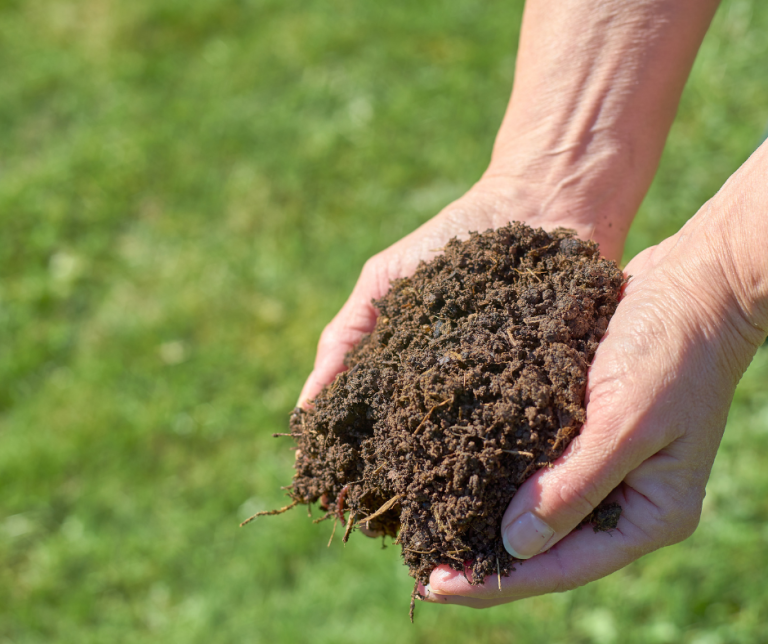
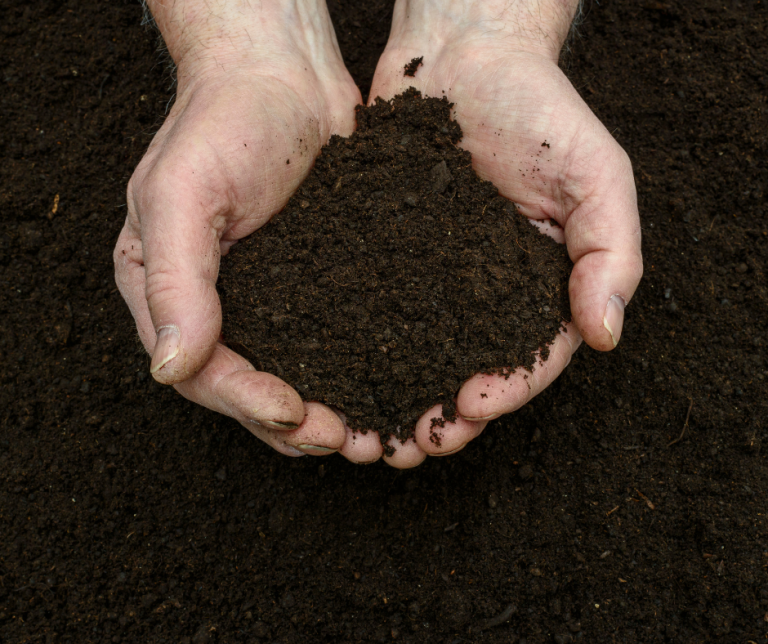
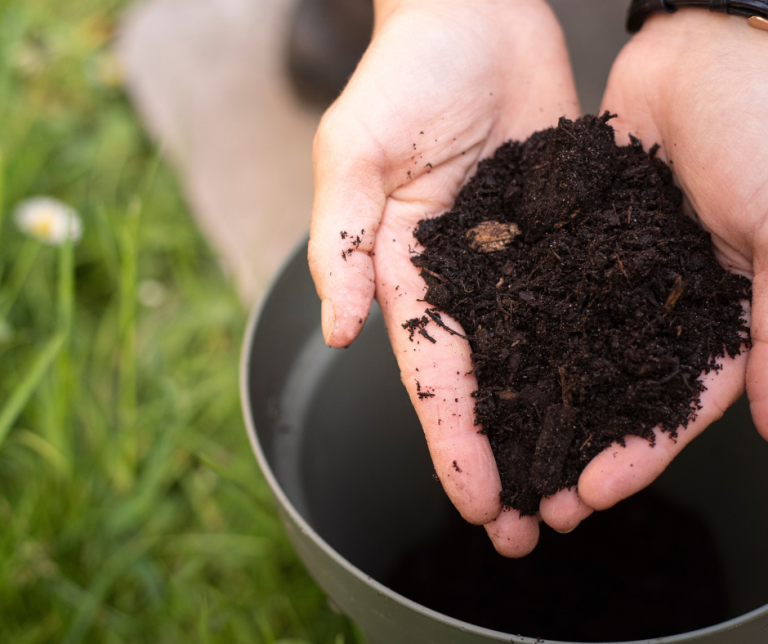
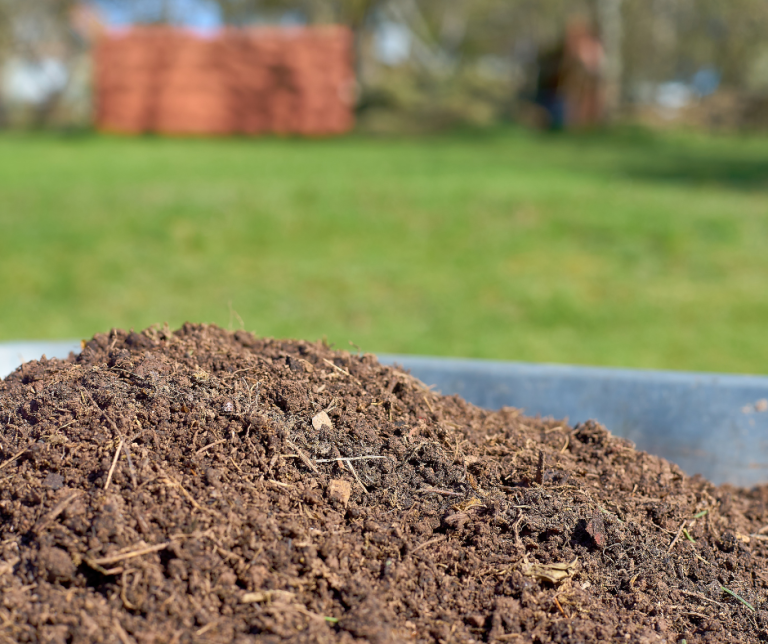
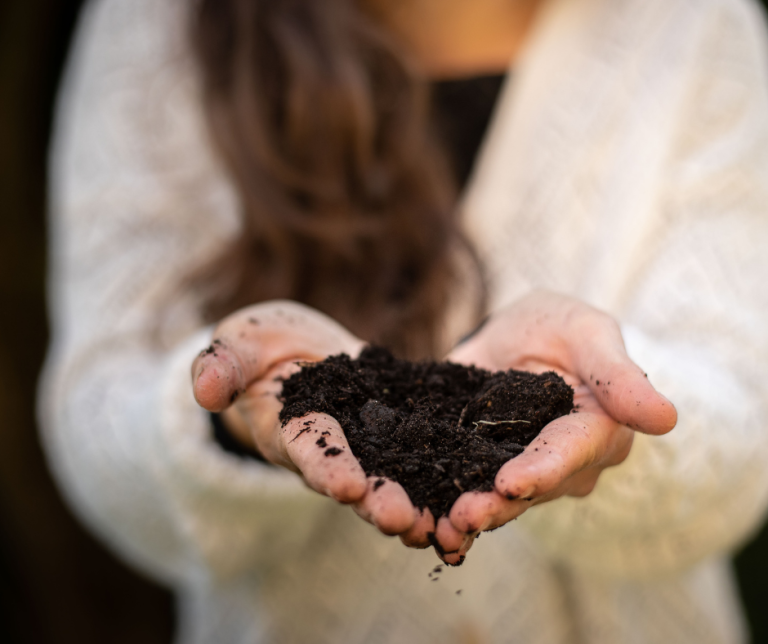
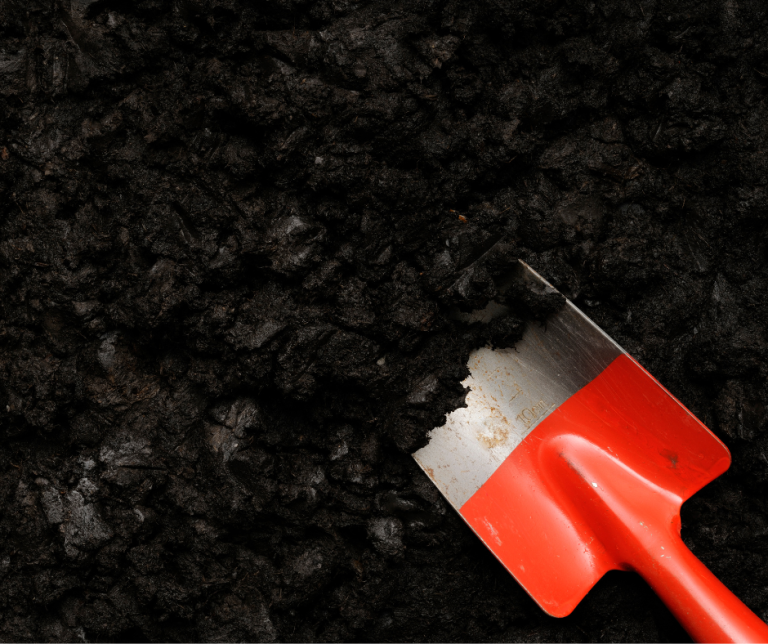
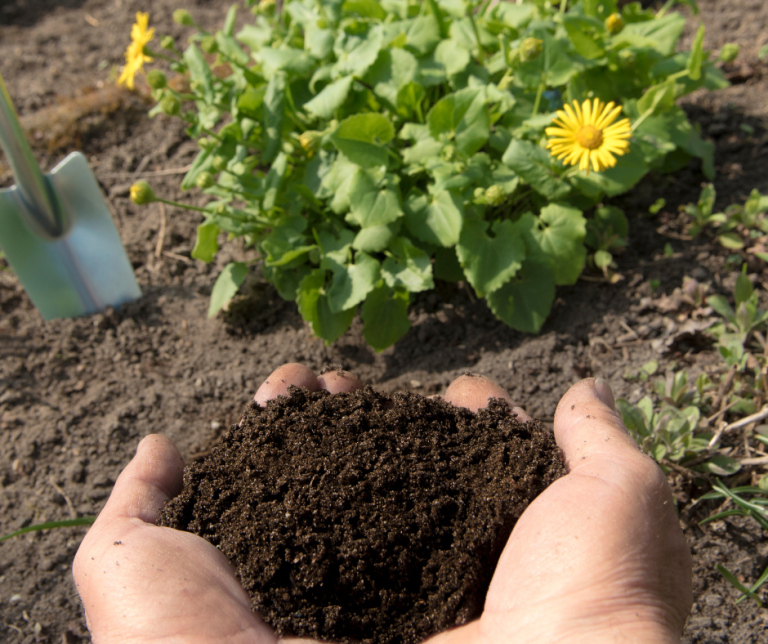
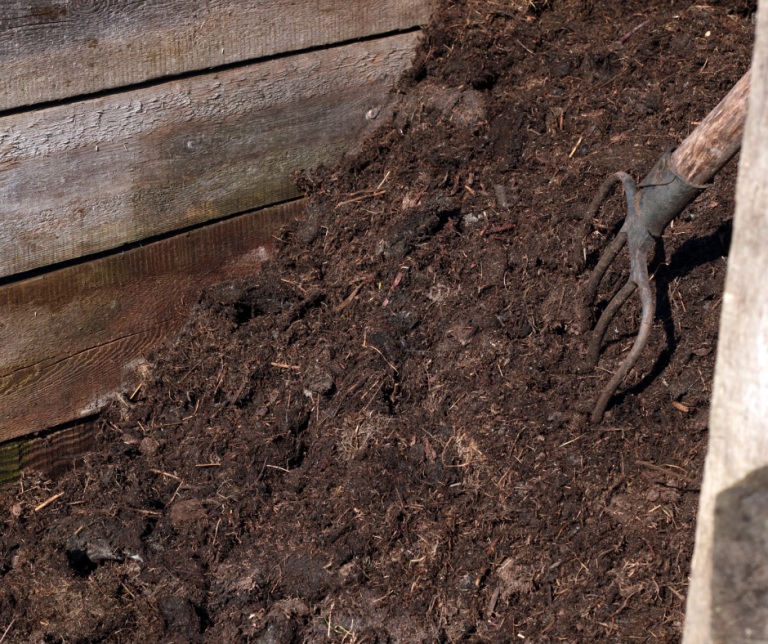
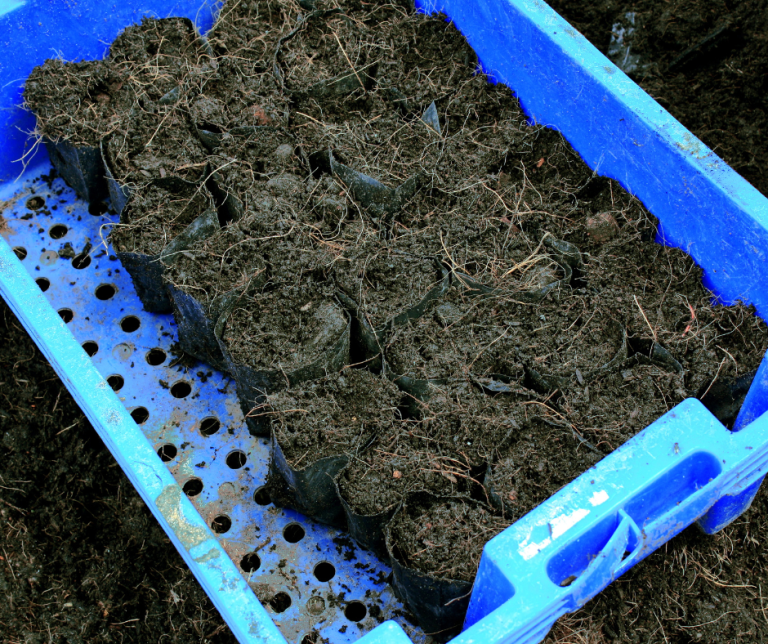

Appearance:
- Deep dark brown to black.
- Visually uniform – no visible food scraps, leaves or twigs (though a few stubborn bits like avocado pits or sticks are okay).
Texture:
- Crumbly and loose – like moist cake crumbs.
- Not too wet or slimy – should feel like a wrung-out sponge.
- Fine and granular, but not powdery.
Smell:
- Pleasant and earth aroma.
- No sour, rotten, or ammonia-like odours – if present the compost is probably not finished.
Temperature:
- Ambient – no longer warm or hot.
- During active composting, heat is generated. Once finished, it naturally cools down.
Volume:
- The volume of materials will have shrunk to about half of its original size.
Tips for Success
A few simple habits can make your Bokashi composting smoother, cleaner, and more effective. These quick tips help you get the best results with minimal fuss.
- Keep the Bokashi bin lid on tight – This will maintain the anaerobic conditions necessary for the fermentation process.
- Chop it up! Smaller pieces will break down quicker.
- Avoid opening the bin too much! Limit how often you open it to add your waste to maintain anaerobic conditions.
- High-protein waste? Sprinkle extra Bokashi bran evenly over high-protein food waste (e.g. meat/cheese/fish) to help break down the protein content.
- Drain it often! Use Bokashi tea for drains or as liquid fertilizer for your plants – don’t forget to dilute it!
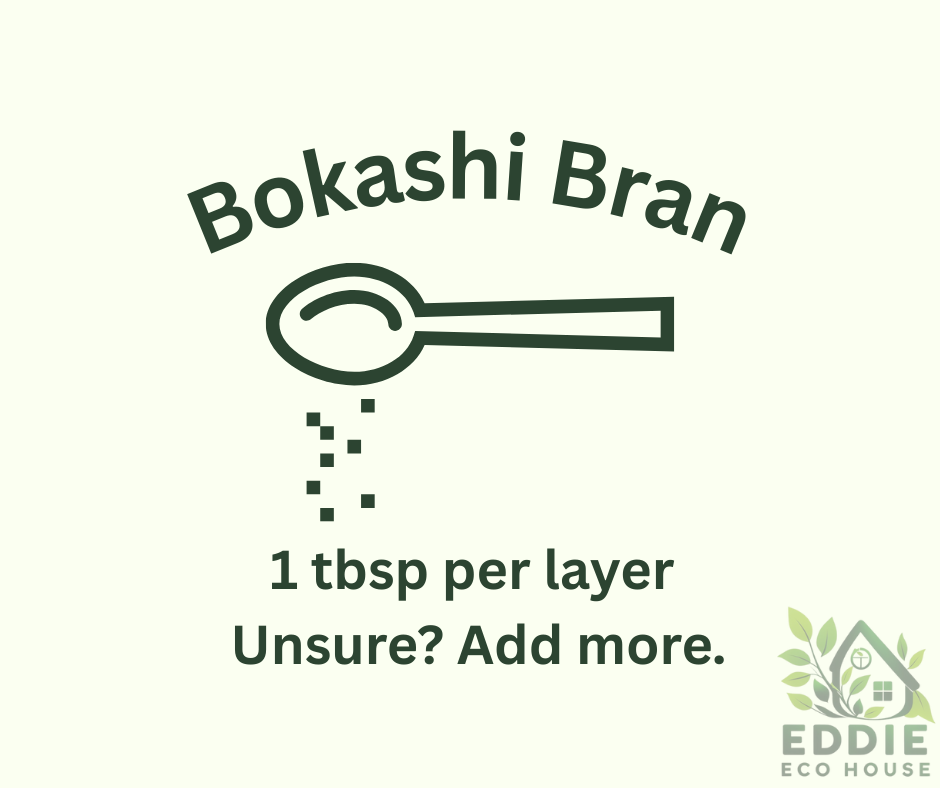
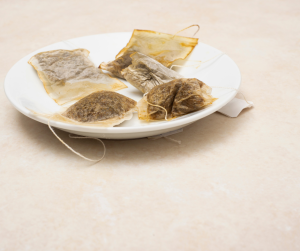
- Adding teabags?
- Always check the box, and confirm they are compostable.
- Bokashi instructions will often say not to add tea bags, as they can add too much liquid into your composter. But, if you are willing to let them dry out on a saucer or dish on a windowsill, you can add them without worrying about the extra liquid.
Troubleshooting Your Bokashi Bin
Even with the best setup, things don’t always go perfectly—and that’s okay. If your bin smells off, isn’t draining properly, or the waste looks unusual, this section will help you identify what’s gone wrong and how to fix it. From common issues to quick solutions, we’ve got you covered so your composting stays on track.
Bad Odour?

Problem: Bad odour
Possible Causes:
- Too much moisture
- Not enough Bokashi bran
- Container isn’t air-tight.
Solution:
- Add extra bran, mix well, and seal the lid tightly.
Leachate Overflow?
Problem: Leachate overflow
Cause:
- Too much moisture- liquid or wet food scraps added
Solution:
- Drain Bokashi tea regularly and add more bran to absorb moisture.
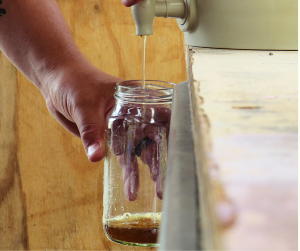
Mould Growth?
Problem: Mould Growth
Black or Green mould?
Black or Green mould suggests your food is rotting rather than fermenting.
Solution:
Just a bit of this mould?
It may be salvageable:
- drain off excess liquid,
- compress waste
- add extra bran.
- Check the lid is sealing tightly.
A lot of this mould?
- If there’s a lot of this mould, unfortunately you will need to dispose of the contents.
- You should empty it into a biodegradable bag and bin it.
- Give the Bokashi bin a rinse out and start again.
Problem: Mould Growth
White mould?
White mould is actually a fungus: this is a good sign! This means your food waste is fermenting rather than rotting.
Although, it can also be a sign that air is getting to your food waste – Check the lid is sealing tightly.

Leaking tap on Bokashi Bin?
Problem: Leaking tap on Bokashi bin.
Cause:
- The tap may not be tightened fully, or may have been tightened too much, causing the seal to break.
Solution:
- Loosen the bolt, check the washers are in place, and tighten it again – avoid over-tightening it.
If it still leaks, you may need to replace the rubber washers.
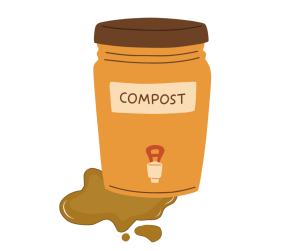

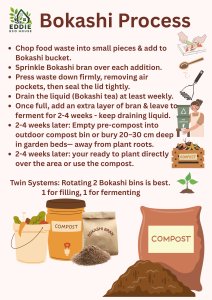


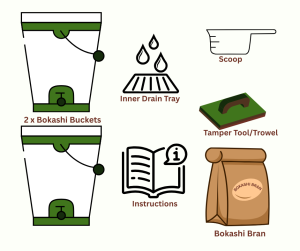
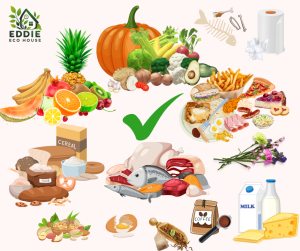
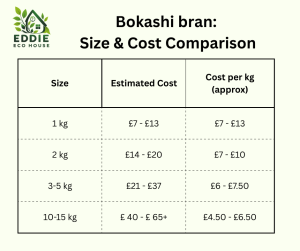

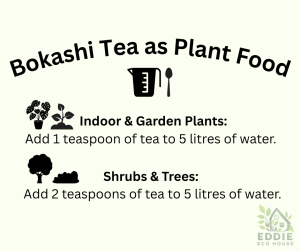
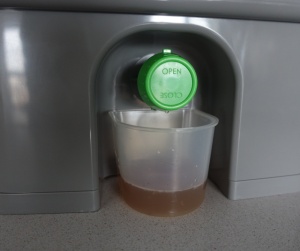
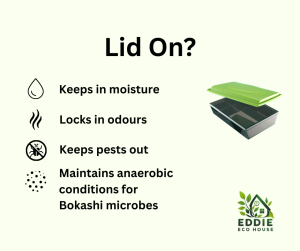
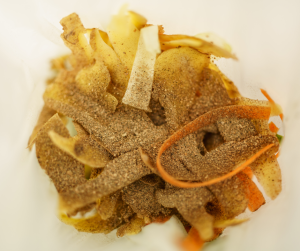
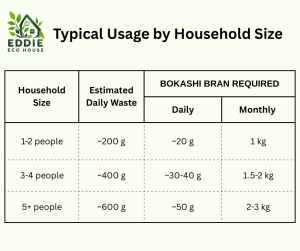

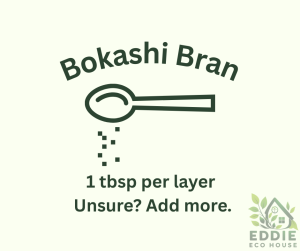

Bokashi composting not for you? Click below to explore out our guide to find the composting system for you!
Affiliate Disclosure: If you choose to make a purchase using our links, I may earn a small commission – it helps me keep sharing, and it wont cost you extra.

